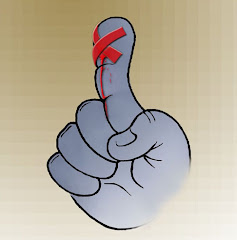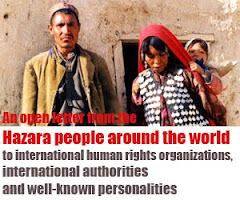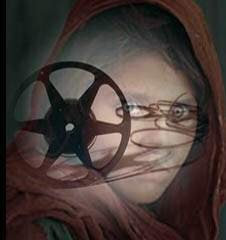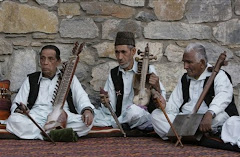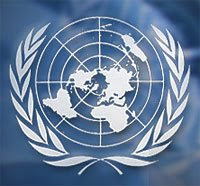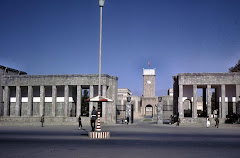
The Hazaras in Antique Bamyan
A few days ago a person among the recipients of our press release for the demonstration in Milan had asked me to give explanation on “how the Hazaras are different from the others in Afghanistan” and I sent her these answers via mail. Now I would like to share it here as well, so the other readers would read it. The mail sender was somehow blindly defending the ethnic Pashtoon as she was influenced by the propaganda of the Pashtoon leaders but here we bring quite clear examples of how the Hazara people are. We highlight here the differences of the Hazaras with the Pashtoon.
The purpose of these answers and comparisons is not enmity or to be against the other ethnics of Afghanistan, but is to bring clarity on the situation of Afghanistan that would help the foreigners know this country better.
The other purpose of these answers is to separate who does good and who does bad things in Afghanistan, to show who are the Taliban, and who support them, and to say that all people of Afghanistan are not the Taliban. DISTICTION between good and bad, right and wrong is a difficult thing to do indeed, but explanations, clarity and examples would help do it better.
Like the Jews of the WWII, we Hazaras as victims and survivors of historical mass-massacres in Afghanistan deserve the right to relate our history and our stories, memories and documentations regarding our genocide to the people of the world, as well as to our own offspring, generation to generation to reveal the cruelty that was done against us.
Therefore we would like to ask the readers to share our writings, stories and articles to as many people as possible, so that we would reach to a desired justice that is the need for humanity and for a long term peace among the people.
1- The Hazaras do not have illegal armed groups such as (Kochis, Taliban) as the Pashtoons do. The only armed group they had to defend themselves against the Taliban attacks, was the first group who joined the DDR Process (Disarmament, Demobilization and Reintegration) after the defeat of the Taliban in 2001.
2- They instead have a legal economy and most of the villagers are farmers.
3- The Hazaras do not cultivate opium as the Pashtoon do (which economically help and nourish the growth of fundamentalism, extremism and terrorism in Afghanistan)
4- They instead cultivate grains to nourish a legal economy in the country and help the peace process.
5- The Hazaras do not stone the women as the Pashtoon do.
6- They send them to schools and give them the right to study and improve and serve the society.
7- The Hazaras do not cut nose and ears of their women.
8- They let them improve and become leaders in the society. (Most of women in police are the Hazaras. The first women governor, the first women mayor in the history of Afghanistan is a Hazara, the Hazara women join the police and the army of the country as long as there are opportunities for them.)
9- The Hazaras do not train the little boys and girl to commit suicide attacks.
10- They send their boys and girls to school to be useful in the society.
11- The Hazaras do not commit suicide attacks as the Pashtoon (extremists) do.
12- They instead protest in civic ways such as; paving the roads with mud, giving medals to donkeys and putting a big lantern on a city square, as the people did in Bamyan.
13- The Hazaras do not burn schools and other public buildings.
14- They instead make schools. Most of private schools and universities and Kabul belong to the Hazaras. More than 65 % percent of first and second position students in all faculties of Kabul University are the Hazaras while they were banned from higher education through official governmental decrees during the monarchy (in 1960s) but whenever there are equal opportunities for them, they have proved to be not only equal but even better than the other ethnics, in education. They say, the only weapon they have against the fundamentalism in Afghanistan is the education thus they do not have arms.
15- The Hazaras do not let narcotic addiction to come to their youth, instead they encourage the youth, for arts, sports and positive recreation activities, their athletes have brought many medals in international level for the country. Their artists have brought many prestigious awards and prizes for Afghanistan.
16- In the government, as an act of racism, the Hazara ministers were all boycotted by Karzai’s racist team, but the Hazara did not pick up guns to ask for their rights, they instead conducted many civic gatherings and demonstrations to protest against racism and discriminations.
17- The provinces of the Hazaras were all collaborative and cooperative with peace process of the country to have a peaceful life in the country, but they were all neglected by the racist government for any kind of development, reconstruction and improvements. Instead the racist government sent Kochis to burn those areas to shift the war there from south of the country to those areas.
With around six million people the Hazaras make roughly 20 % of population of Afghanistan but their share in the national development budget is something less than 2 % because of discrimination. While Afghanistan is a multiethnic country and the resources and the political powers are to be shared based on the population of the ethics as agreed in Bonn Conference in 2001 after the defeat of the Taliban. With Bonn agreement, the people of Afghanistan put an end to the war to begin a new life with peace, justice and equality. The Bonn conference was the end of a dark period and the beginning of a brighter one, but most of the articles agreed in that conference were neglected by the racist team of Karzai government. The base of Bonn agreement was equality and social justice among the ethnics in power sharing and sharing of the resources in the country which are not applied yet after ten years.
18- The news and information on Hazaras areas are being boycotted by the government. A couple of years back, the government officials threw hundreds of volumes of fiction and non fiction books written by the Hazara authors to the rivers, to calm their voice down, which is exactly comparable to book burning of Nazis but this news was censured by the Afghan Government not to reach to the international media.
For all these abovementioned reasons the Hazaras are considered to be “The outsiders” (as said in an article by National Geographic) because they are different, they are not like extremist PASHTOONS, because they do not kill, they do not burn schools, they do not commit suicide attacks, they do not cut the nose of the women, they do not cultivate opium, and they do not blast public buildings.
Because they are open to democracy, they are open to freedom, human rights, women’s rights and equal opportunity and justice for all. Because they are the survivors of historical genocides in their country thus they need peace, rehabilitation and justice to release from this historical pain.
Because they believe that freedom is a basic right for the human beings and to arrive to a “SUB LEGE LIBERTA” there is need of a public awaking revolution, that is only and only possible through education, literacy and a public brightening process and the Hazaras already do that, they educate even their elderly women in the villages by their own means of support.
Therefore they are very badly discriminated in all areas, from politics to the public services and civic rights. The long way of discrimination against them has an old root and it still exist.
One of the very basic examples for discriminations against the Hazaras in the National Budget of the country;
While a Pashtoon minister’s monthly salary in Karzai’s cabinet was 3,000 $USD in 2007, in the same year, the annual budget for the agriculture of a Hazara province (the whole province) with a population of 400,000 people was allocated 2,500 $USD!
Is it not a clear discrimination, injustice and act of racism against an ethnic?!!
It is only a drop from a big sea. We face the injustice all days anywhere in Afghanistan, therefore you see large number of Hazara refugees and asylum seekers in different countries but we never pick up guns to ask for our rights, instead we follow peaceful ways which are long, hard, exhausting but we know that we reach to prosperity one day, as THERE IS ALWAYS BRIGHTNESS AFTER EACH DARKNESS and we know very well that “NO TYRANY WOULD REMAIN FOR EVER” so we conduct demonstrations, gatherings and seminars to deliver our message of justice and equality in Afghanistan to the people of the world.
In spite of all these injustice, acts of racism and obvious discrimination against us none of the Hazaras commit suicide attacks to protest against this injustice, they instead held seminars and civic protests to look for ways how to eradicate discrimination from Afghanistan.
It is better to wash our eyes and see things through reality and to be honest with our consciences at least.
Revealing these realities, would never mean enmity with the other ethnics of Afghanistan. We all are brothers and sisters and the brotherhood is meaningful when every one has equal rights and opportunities based on their capacities.
We have all the time said, what only we want is, justice and equality! “No big brother, No small brother” but all people of Afghanistan would have equal rights and equality, that is how we could reach to a real and stable peace in Afghanistan.
No specific privileges and no prejudice just for belonging to a specific ethnic.
At the end I would like to bring two quotes from Mazari, the Hazara Leader during the three years resistance of the Hazaras in west of Kabul (1993-1995) who was then killed by the Taliban as the first victim of terrorism in Afghanistan.
“We are not the enemies of the Pashtoons, nor the fond of Tajiks, but we are in favor of a brotherhood based on which we all could reach to justice and equality!”
Abdul Ali Mazari- Hazara Leader, 1994 west of Kabul.
“What we want is being a Hazara would not be a crime anymore in this country!”
Abdul Ali Mazari- Hazara Leader, 1994 west of Kabul.
And one last thing:
LIFE IS BEAUTIFUL, THE HAZARAS LOVE IT AND WANT TO LIVE AS LONG AS POSSIBLE, AND THEREFORE, THEIR STRUGGLE IS TO HELP THE OTHER ETHNICS AS WELL TO FEEL THE BEAUTIFUL PART OF LIFE AND LIVE BETTER.







